A Level Geography HOT DESERTS
1/65
There's no tags or description
Looks like no tags are added yet.
Name | Mastery | Learn | Test | Matching | Spaced |
|---|
No study sessions yet.
66 Terms
What is a hot desert?
An area which receives less than 250mm of rainfall per year.
What are ventifacts, yardangs and zeugens?
Landforms shaped by wind over time (e.g. yardangs in photo)

Example of a ventifact
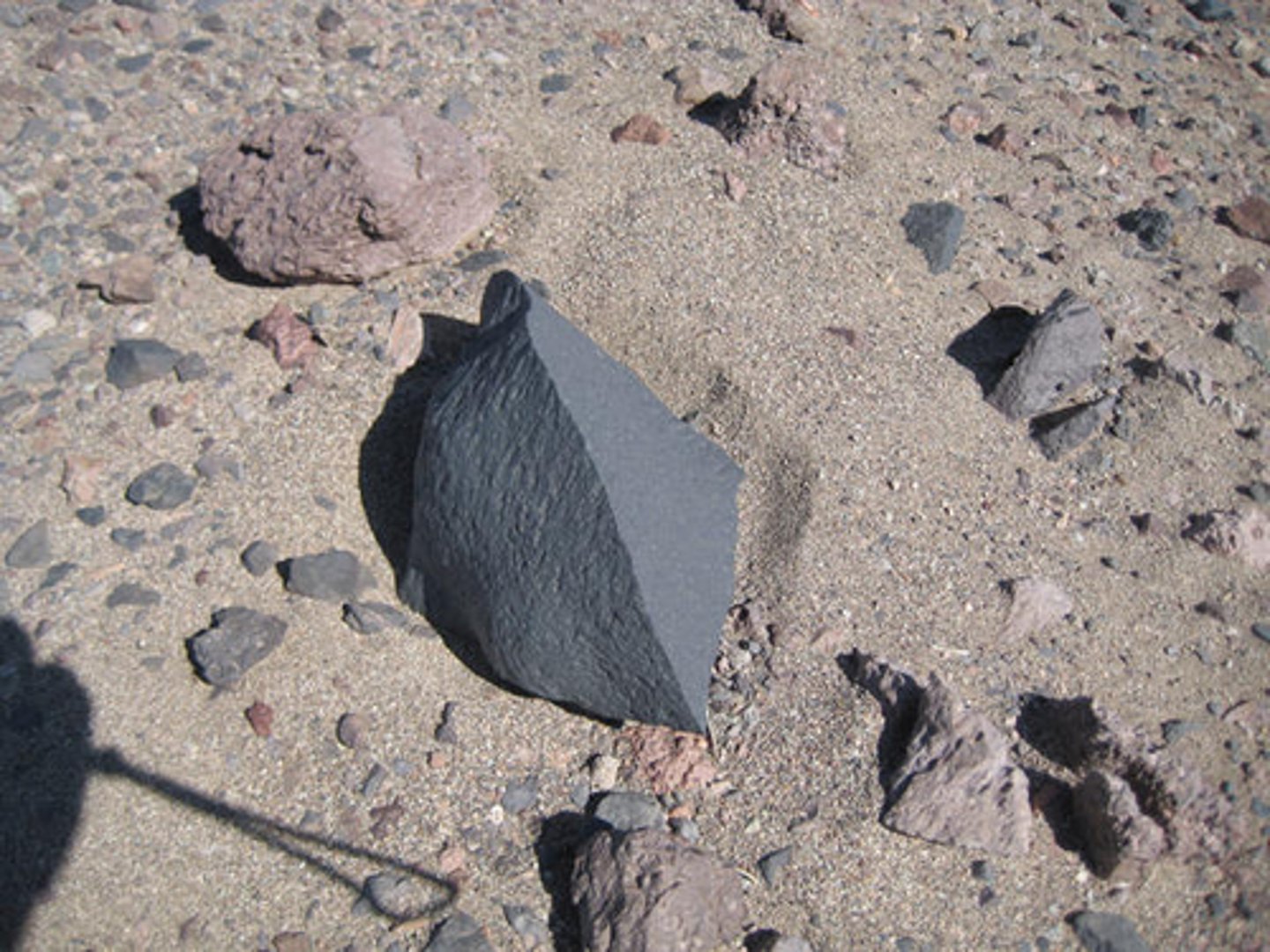
What are seif and barchans?
Types of sand dunes
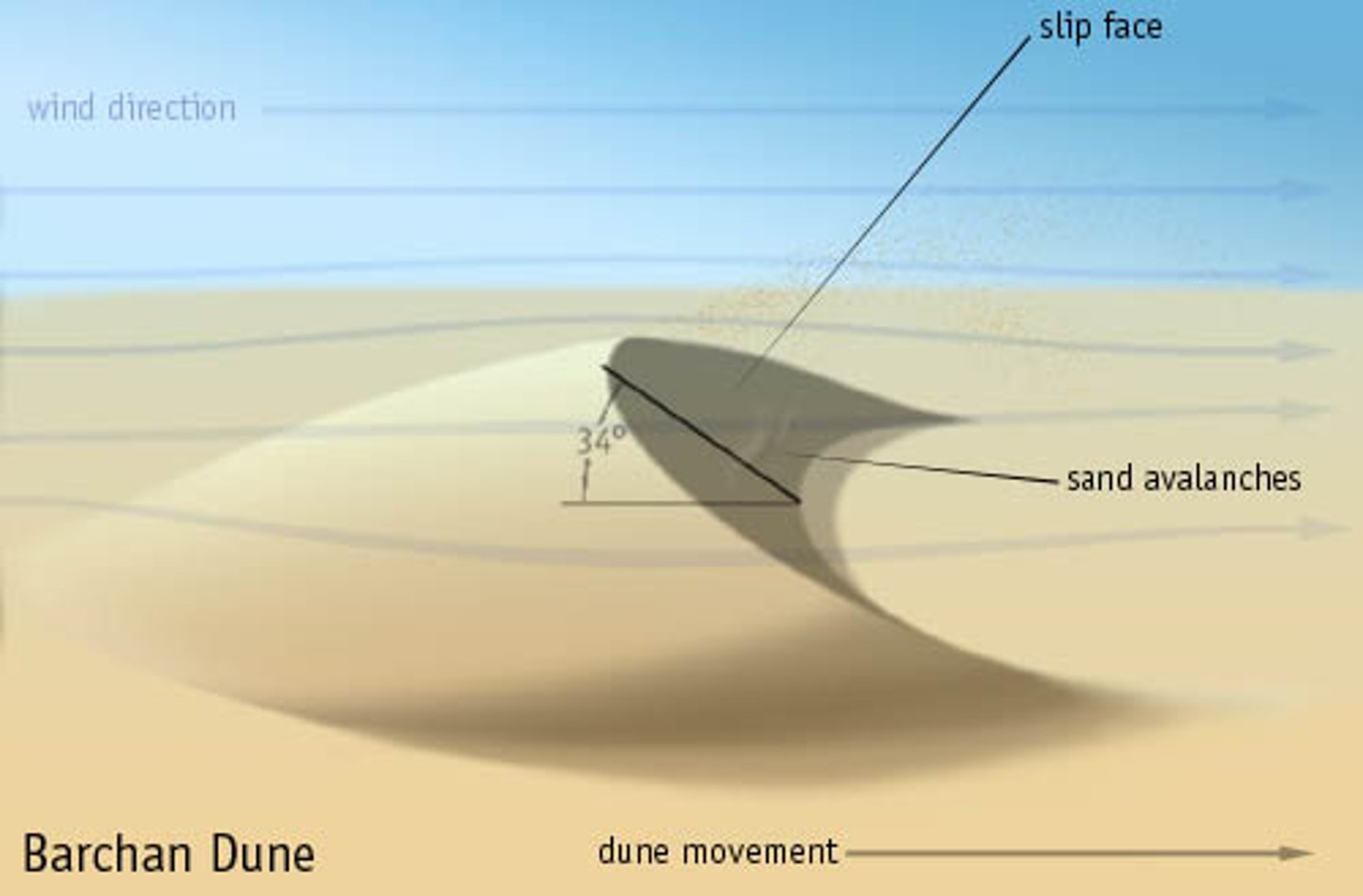
What are hamadas?
Landforms caused by deflation (more spread out than desert pavements)
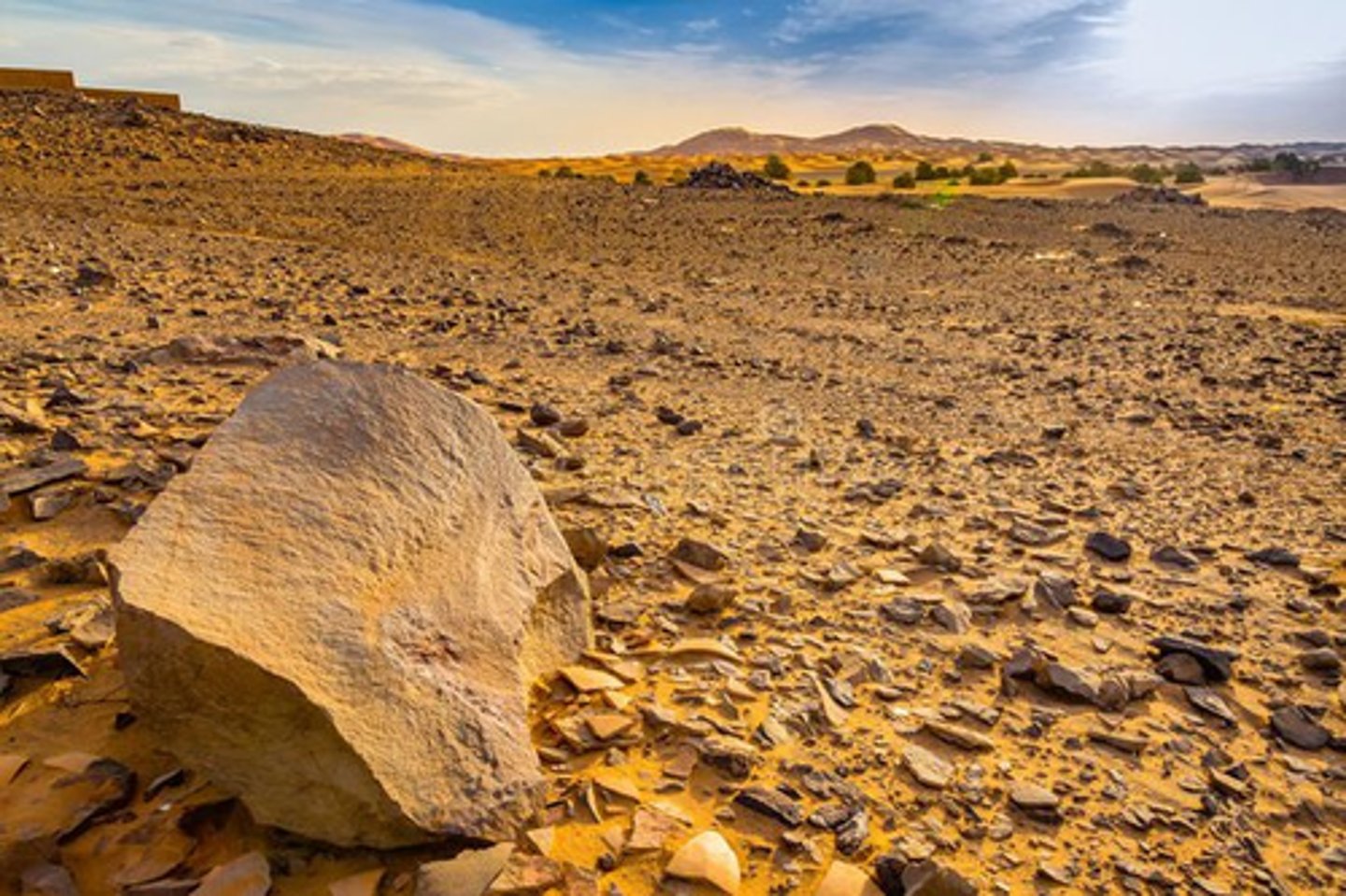
What are wadis?
A valley or channel in the middle of a mountain that is dry except in the rainy season (ephemeral)
examples of fluvial landforms
What are braided streams and alluvial fans?

What are bajadas?
Extensive alluvial fans emerging from upland areas join to form a continuous layer of sediment.
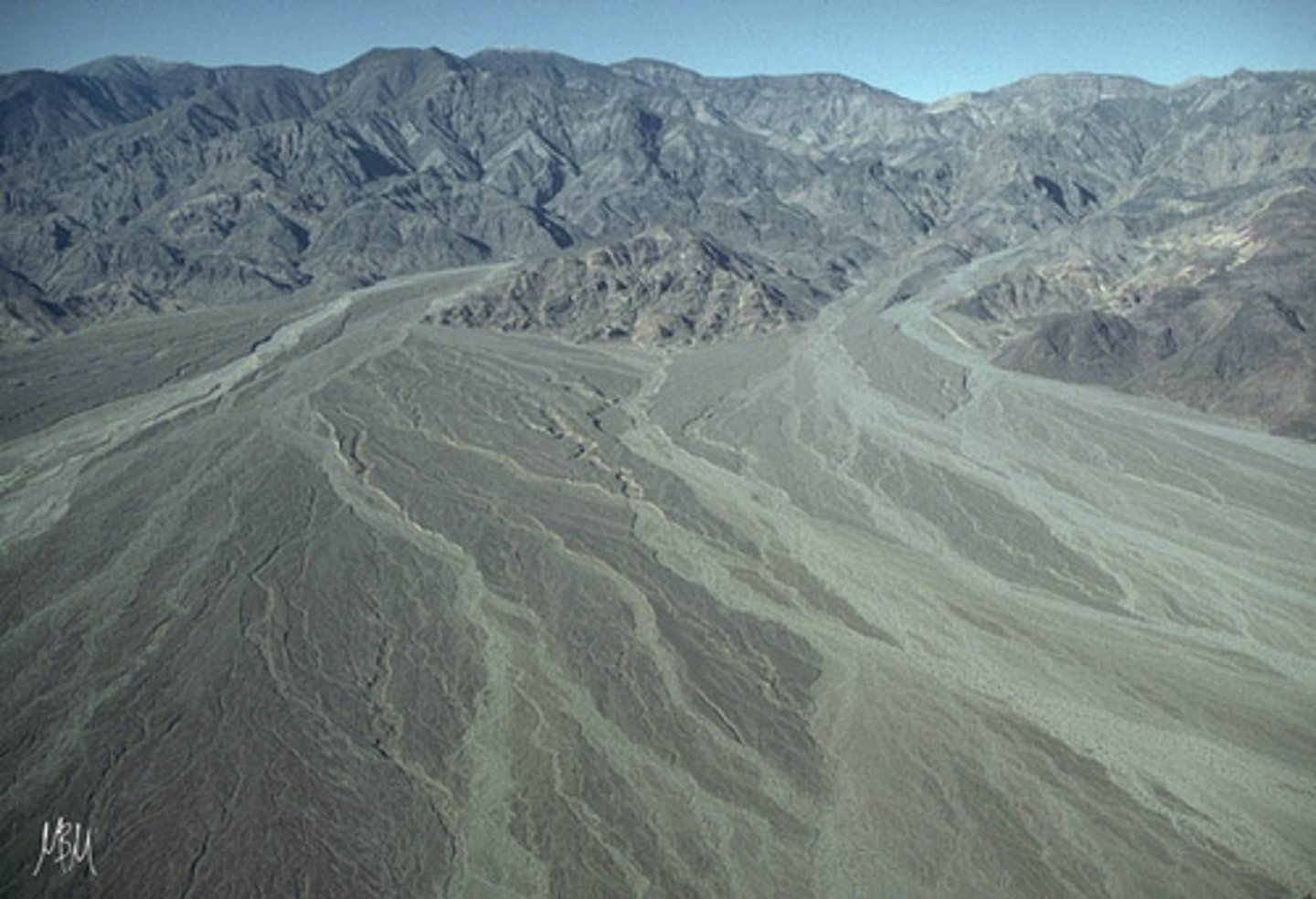
What are salt lakes and playas?
Landforms with extreme evapotranspiration causing salt to rise to the top through capillary action and form thick layers of salt.
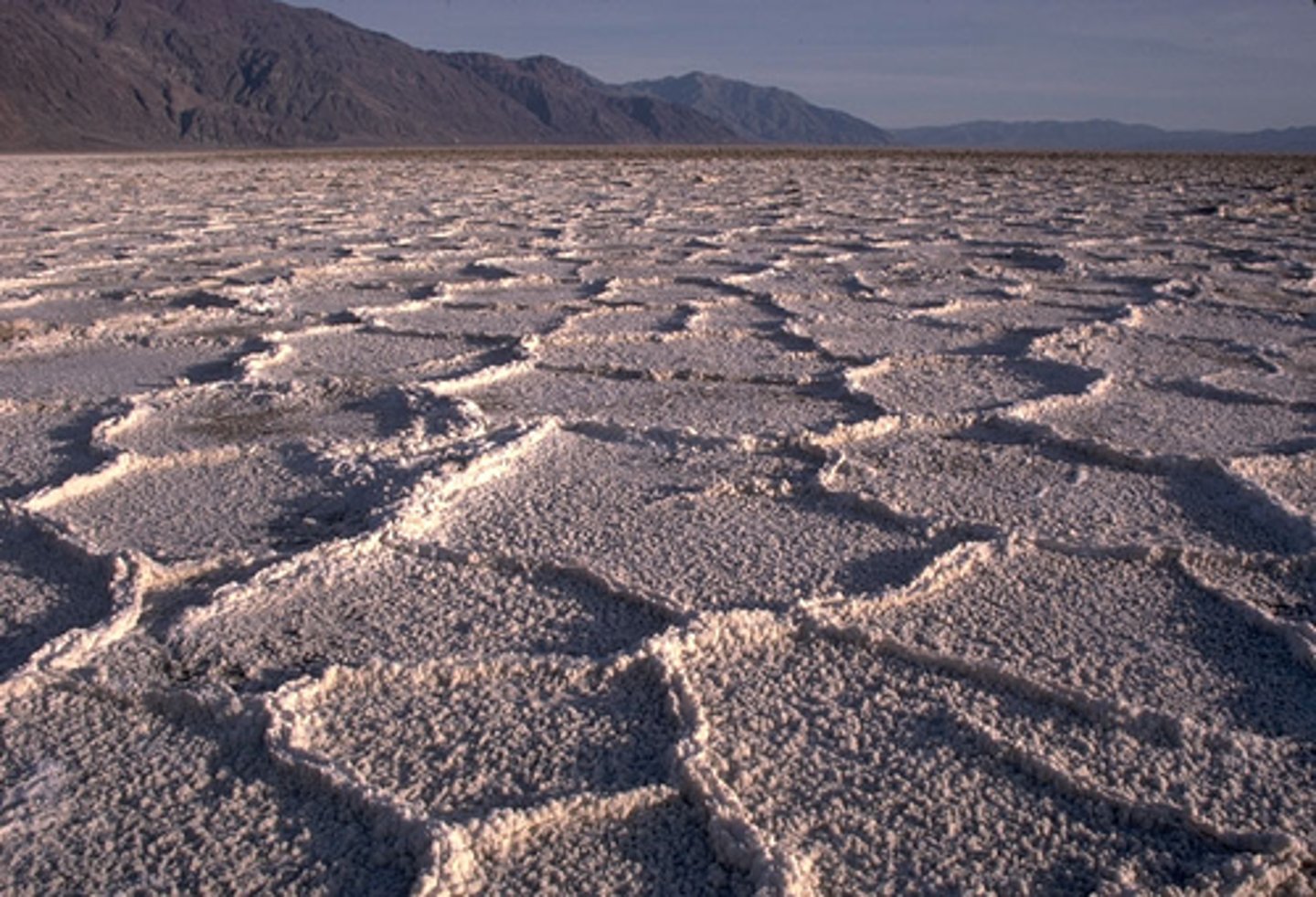
What are inselbergs?
Areas of hard rock carved by water and softened by wind
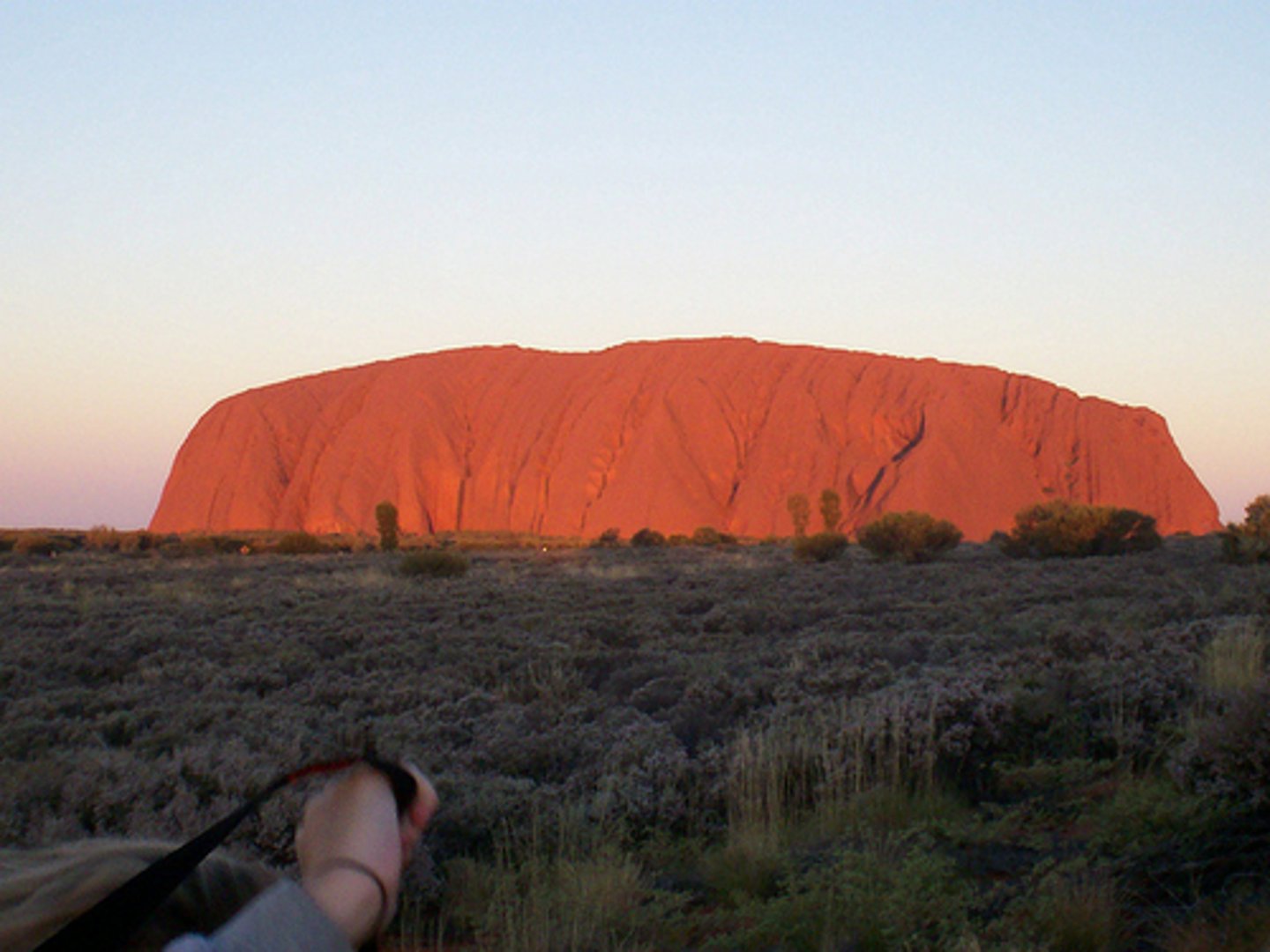
Plateaus, mesas and buttes
Found commonly where the bedrock is sedimentary with horizontal bedding planes. Created by fluvial erosion.
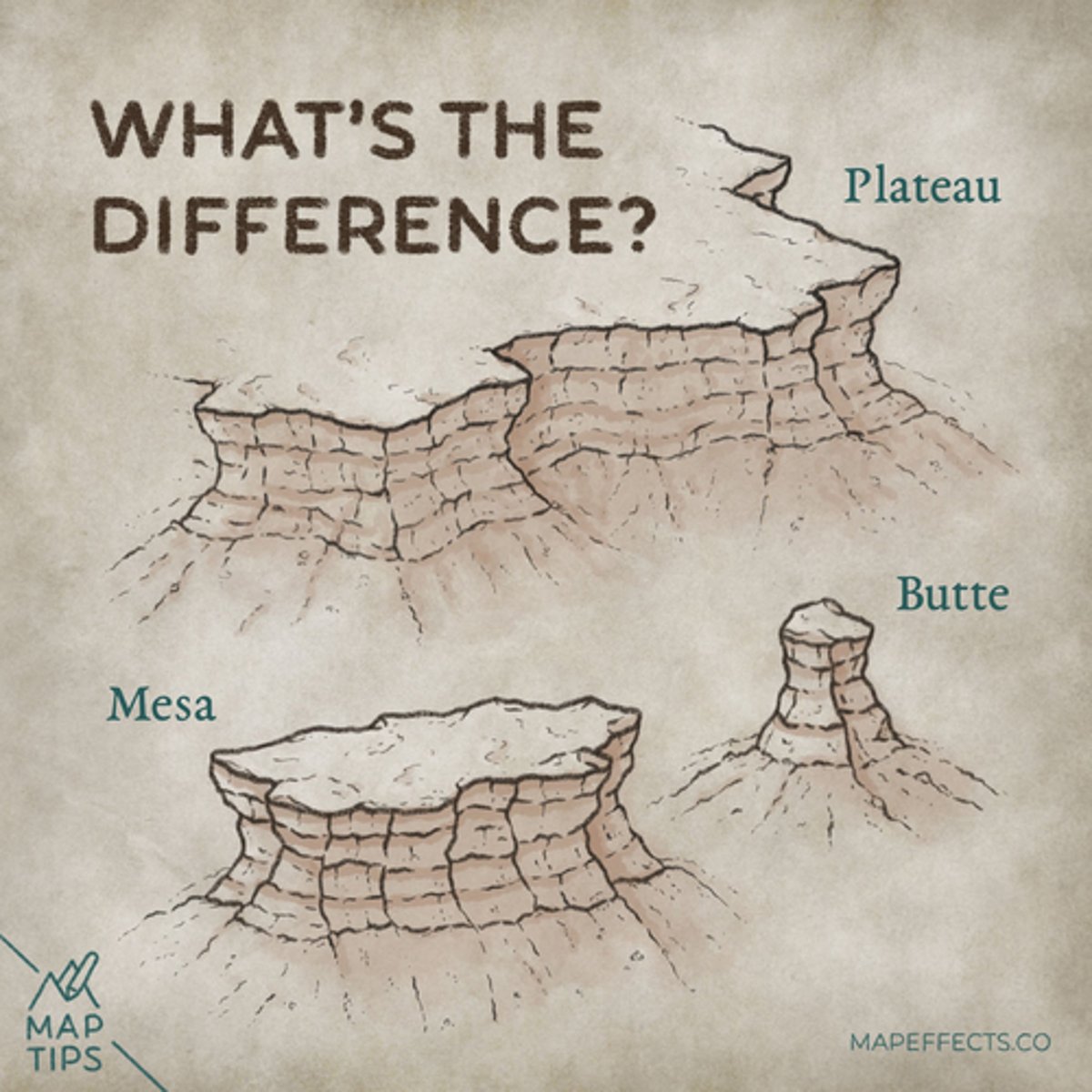
What are aeolian landscapes?
Smooth and barren landscapes created by wind
What are fluvial landscapes?
Striking and intense landscapes created by water
Pluvial
A period marked by increased rainfall
What is potential evapotranspiration?
Measure of water loss from soil and plants
When and why does wind dominate?
Wind is constant, creates smooth and barren landscapes
When and why does water dominate?
Water is usually episodic, meaning rare but extremely powerful. Creates striking landscapes (eg The Grand Canyon)
Types of flooding in deserts
Sheet flooding and channel flash flooding
5 major desert processes
Transportation, Erosion, Weathering, Mass movement, Deposition
Processes of transportation
Suspension, Saltation, Surface creep
Processes of erosion
Deflation, abrasion
Processes of mechanical weathering
Thermal fracture, exfoliation, freeze-thaw, block disintergration
Processes of chemical weathering
Crystal growth, hydration, hydrolysis and oxidation
Processes of mass movement
Rock falls and rock slides
Deflation
Lighter sediment is picked up and removed by the wind lowering the land level and leaving a desert pavement.
Abrasion
Small sediment particles in suspension in the wind are hurled at larger rocks, eroding their surface.
Suspension
Wind picks up small sediment particles and carries them over long distances.
Saltation
Sand sized particles picked up by the wind and carried a short distance before landing (bouncing along).
Surface creep
Particles carried in the air by the wind hit larger rocks and cause it to slowly be pushed forwards.
Deposition
Sand that is being transported is dropped off in certain areas off when the wind changes velocity.
Diurnal range
The difference between the lowest temperature and the highest temperature in a 24 hour period
Thermal fracture
Rapid heating and cooling of the rock cause cracks to form.
Exfoliation
Large sheets of rock break off from the surface of boulders due to pressure releases.
Freeze-thaw
Water enters rock, cracks and freezes, expanding the crack.
Block disintegration
Successive heating and cooling which causes the expansion and contraction of rocks, causing grains to become loose or to break along the joints.
Crystal growth
Water moves into empty spaces in the rock and evaporates leaving salt crystals, putting more pressure onto the rock.
Hydration
Water is absorbed by the minerals in a rock creating crystals which put pressure on the surrounding rock making it crumble.
Hydrolysis
Water reacts with the minerals in the rock causing the chemical composition to change and become more unstable.
Oxidation
Oxygen reacts with minerals to form iron oxide which leads to the decomposition of the rock (red/brown)
Components of systems in deserts
Inputs, outputs, stores and flows.
Open system
Energy and matter can flow in and out of the system.
Closed system
Energy can flow in and out of the system.
Isolated system
No energy or matter can move in or out of the system.
Dynamic equilibrium
When there is a balance between the inputs and outputs. Can be disrupted by changes in feedback cycles (storms, droughts, deforestation, overgrazing).
Sediment budget
The balance between the input and output of sediment in hot deserts.
Sources of sediment
May either be derived from the weathering of the underlying parent material or may be fluvial of origin (rivers bringing sediment into deserts)
Sources of energy in deserts
Winds (aeolian), Water (fluvial) and Sun (insolation)
Sources of water in deserts
Exogenous, endoreic and episodic
Causes of aridity
Global atmospheric circulation, continentality, rain shadow, cold ocean currents.
Global atmospheric circulation
Located of the falling limb of the Hadley cell (high pressure)
Continentality
The effect of distance from the moderating influence of the ocean on climate
Rain shadow
Result of a process by which dry areas develop on the leeward sides of mountain ranges (e.g. Sierra Nevada, Mojave desert)
Cold Ocean Currents
Leads to air cooling, mean it can't carry as much moisture, creating dry winds on the coasts.
Aridity index
Hyper arid (<0.05), Arid (0.05-0.2), Semi-arid (0.2-0.5). Calculated as the ration of P/PEP.
Water balance
The balance between water input and output.
Calculated using the equation: P = Q + ET + ΔS
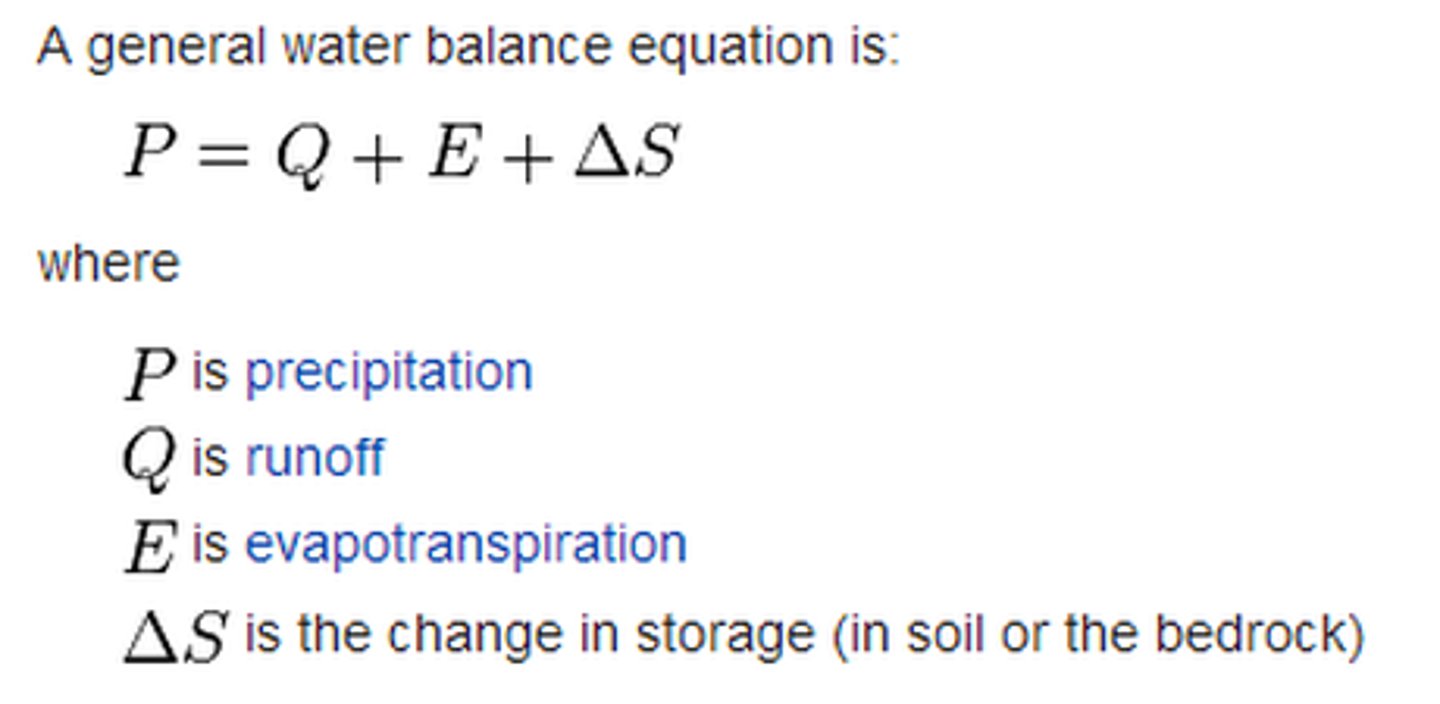
Distribution of hot deserts
Most found in the tropics between 15-30 degrees North and South of the equator. 30% of the Earth's surface is semi-arid and arid, with 4% of the Earth's surface being hyper-arid.
Characteristics of soils in hot deserts
Aridisols: thin, alkaline, no A horizon
Raw mineral soils
Arid areas, brown/red, course texture, unproductive, no A horizon.
Sierozems
Semi arid areas, grey, used for cultivation
Horizons of soil

Adaptations of vegetation to limited moisture
Fleshy leaves, reduced leaf surface area, extensive and shallow root network, become phreatophytes (roots travel deep to reach moisture from water table)
Adaptations of vegetation to droughts
Plants become dormant or lose leaves.
Adaptations of vegetation to high soil salinity
Halophytes (tolerant to high saline levels)
Capillary action
The upward movement of water within the spaces of a porous material due to the forces of adhesion, cohesion, and surface tension.
Leaching
The transportation of dissolved molecules through the soil via groundwater. Lack of water then causes build up of calcium and sodium in soils like raw mineral soils.
Desertification
The process by which fertile land becomes desert, typically as a result of drought, climate change, deforestation, or intensive agriculture.